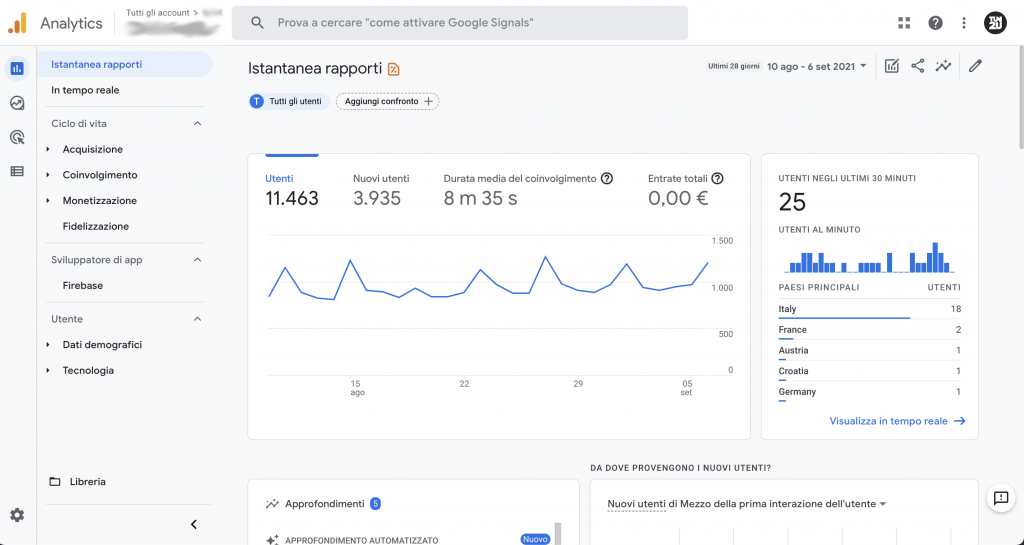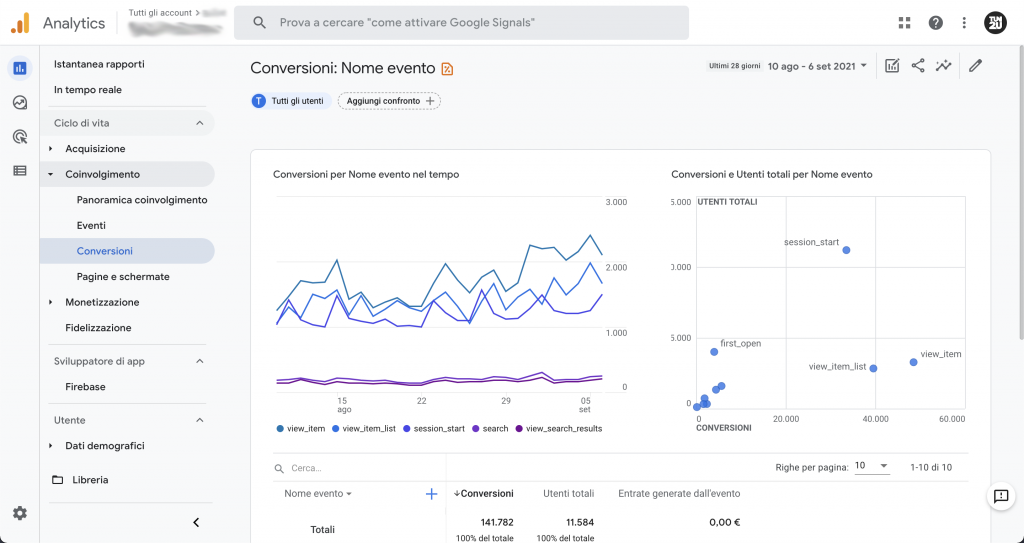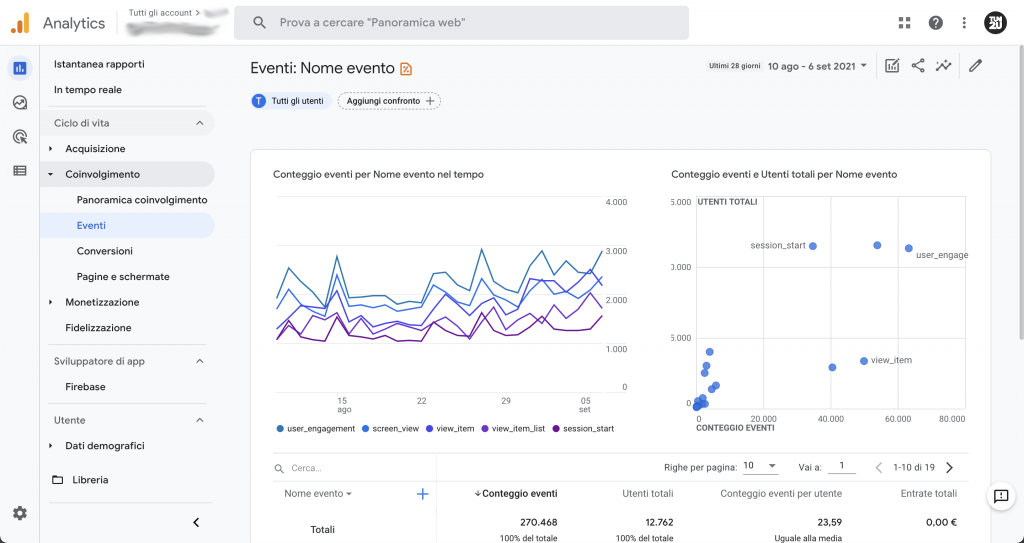Recently Google has again updated the version of the very popular Analytics analytics system, which we all have on our websites by now. This major milestone, now in its fourth upgrade, provides an even more comprehensive and powerful experience inweb traffic monitoring andanalysis, especially from a cross-device perspective.
Let’s find out together the important new features introduced…
What are the new features introduced in Google Analytics 4?
As we know, artificial intelligence is making great strides, especially in the world of the Web. This is precisely why GA4 has made it one of its main strengths, making it very different from the old version. Through this fascinating technology, in fact, GA4 is able to model and fill data gaps in tracking often caused by cookie consent, javascript code, and other privacy-related limitations.
Another important new feature that immediately jumps out at you is certainly the revamped GUI, which is also very different from the previous one and disorienting at first impact, but don’t worry! Great UX work has been done, and with a few hours of use you will be able to regain confidence, your favorite metrics and more.

A “Privacy First” Approach
Google once again redefines the rules of data analysis by introducing a new monitoring approach called “privacy first,” fusing together data captured from various channels with predictive data based on artificial intelligence.
Using advanced machine learning models, the new Analytics can provide data on a Web site’s traffic and user behavior without relying (or only partially) on the “hits” that come from each page visit.
The mission of GA4, through machine learning processing, then, is to go out and fill the data gaps that are being created due to the increasing restriction on data consent by users. The latter, in fact, along with browser companies, are becoming increasingly ‘stingy’ in allowing tracking tools to record visit sessions, all coordinated and limited by new privacy laws such as GDPR and CCPA. It is obvious that in order to be able to have an effective and, above all, truthful tracking system, a breakthrough was needed, which through the use of new technologies could obviate the privacy“problem” without going to violate it. Time will surely tell whether GA4 will have succeeded in this mission!
Increasingly cross-channel and cross-device
Google Analytics 4 was built from the same “App + Web” platform released back in 2019. With the expansion of mobile traffic and the growing trend of browsing on multiple devices/platforms, the App + Web version of Analytics focuses primarily on capturing cross-channel data, thus offering marketing analysts a more efficient and clear way to monitor users from different platforms/channels (app, software, website, etc.).

Attention to this fundamental aspect makes it GA4’s main goal to focus not only on the data captured but on the complex journey that today’s user takes from his or her first visit to final conversion.
This is precisely why GA4 has a strong focus on “events,” of which it makes them the primary means by which data are presented.

GA4’s main strengths
- It is built on machine learning as the main form of data measurement. Through data modeling, it can make assumptions about site traffic and user behavior. The new “Insights” feature based on artificial intelligence aims to highlight useful information for marketers “on the fly.”
- The goal is to provide a more complete view of the user’s journey from all devices.
- It is designed to be smart and function in a world without cookies or identifying data.
- It presents “data streams” instead of the views and segments used by the old Universal Analytics properties.
- There is no “view” level section. While Universal Analytics famously has three levels (Account, Property, and View), GA4 has only the Account and Property levels.
- While event monitoring in the classic version of Analytics requires code-side intervention, Google Analytics 4 allows editing, monitoring and tuning of events directly from its user interface (interactions such as clicks, page scrolling…).
The new features of GA4
- GA4 will make it possible to modify, correct, and fine-tune the way events are tracked without performing code interventions.
- Data import can now include a wide range of data from non-web sources (e.g., apps) within a single property.
- Interdomain monitoring does not require a code-side change but can be performed within the user interface.
- The “Life Cycle Report” seems to be one of the biggest changes in Analytics and focuses on user journey analysis.
- Models for e-commerce data channels offer a new way to visualize and analyze data. A feature that was previously available only in Analytics 360 accounts.
In this short video, Google provides some guidance for getting started with the new version of Analytics. In addition, on the YouTube channel “Google Analytics” you can find other interesting videos related to features and best practices for using the platform.
Discover the potential of your project
If you enjoyed this in-depth look at GA4 and think your project deserves a professional data analysis and digital marketing strategy, contact us for a consultation or check out our best cases to see how we help companies grow online.
